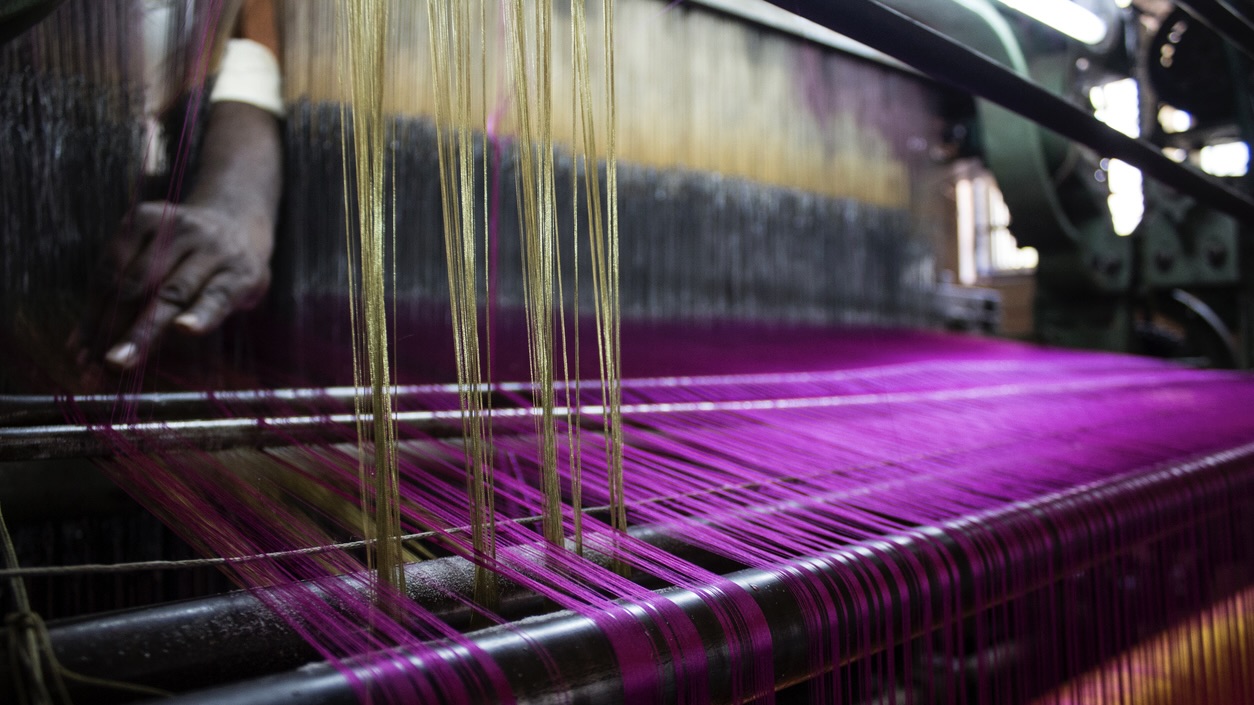The revised tariff regime, formalised on Wednesday and effective from Thursday, 7 August, has hit Indian exports from Tamil Nadu’s textile industry hard, particularly in Tiruppur and Karur.
Published Aug 07, 2025 | 6:16 PM ⚊ Updated Aug 08, 2025 | 8:14 PM

India had, over the past three months, benefited from a favourable tariff regime in the US.
Synopsis: The United States’ tariffs on Indian goods now exceed 50 percent after President Donald Trump reinstated the earlier 26 percent levy along with a fresh 25 percent ‘penalty’ secondary tariff for importing Russian oil. Textile exporters in Tamil Nadu, especially in Tiruppur and Karur, who had seen a surge in US-bound orders in recent months under a favourable tariff regime, are now facing dwindling demand under the new regime, which took effect on Thursday.
The Donald Trump-led United States administration’s surprise decision last month to impose an additional 25 percent secondary tariff, on top of the earlier 26 percent tariff announced in April, has brought the total levy to over 50 percent.
In a post on his social media platform, TruthSocial, on Wednesday, 30 July, Trump described the measure as a “penalty” for India’s continued and increasing dependence on Russian oil and defence equipment, circumventing the West’s effective ban on Russian imports following the invasion of Ukraine.
The revised tariff regime, formalised with an executive order on Wednesday and effective from Thursday, 7 August, has hit Indian exports from Tamil Nadu’s textile industry hard, particularly in Tiruppur and Karur.
Garments manufactured and shipped before the date will be allowed under the old tax rates, but all exports from 7 August onwards will face the higher tariff.
India had, over the past three months, benefited from a favourable tariff regime in the US, triggering a rise in orders, particularly from Tamil Nadu, according to exporters.
Tiruppur alone recorded textile exports worth ₹40,000 crore in the last financial year, with nearly 40 to 45 percent headed to the US. The sudden hike in tariffs has raised alarm among exporters, who fear losing their largest customer base.
The 50 percent tariff is a combination of the latest Trump announcement and the earlier levy, both targeting India’s $86.5 billion export market to the US in 2024.
The first, a 26 percent reciprocal tariff, was announced on 2 April 2025 and took effect three days later. It includes a 10 percent baseline duty on all US imports, along with a 16 percent surcharge specific to Indian goods.
It was later paused under diplomatic pressure, but with Wednesday’s executive order, it has been resumed along with the new 25 percent levy.
MP Muthurathinam, President of the Tiruppur Exporters and Manufacturers Association, said the effects of the hike are already being felt. “A US importer who was paying ₹100 for garments from Tiruppur would now have to pay ₹150 due to the new tariff,” he said.
He added that this increased cost would push importers to shift orders to other countries with lower duties, while also raising retail prices in the US.
Tariffs are taxes on imported goods, typically paid at customs by the importer. While the Trump administration has been presenting tariffs as penalties on countries exporting to the United States, the financial burden is borne by American companies and is almost always passed on to the end consumer in the form of higher prices.
Thus, for Indian exporters, the impact is reduced demand from the US market.
Muthurathinam further criticised what he called a repeated pattern of the US using trade tariffs as a pressure tactic. He said India must not succumb to such pressure and instead focus on diversifying its export markets.
While the US remains a major destination for Indian goods, he noted that countries with larger populations and rising demand could become important markets if approached with a clear strategy.
Muthurathinam urged the Indian government to act swiftly by entering into Free Trade Agreements with various countries and increasing subsidies for the textile sector. He stressed that with the right support, India could surpass Bangladesh, Vietnam and even China in global textile trade.
He warned that the current tariff hike would only benefit these three countries unless India responds with strong policy measures.
Tiruppur, a hub for large-scale garment production, and Karur, known for home textile manufacturing, are the two most affected districts in Tamil Nadu. The new US tariff policy has cast uncertainty over the livelihoods of thousands of workers and manufacturers in these regions.
(Edited by Dese Gowda with inputs from Subash Chandra Bose)
